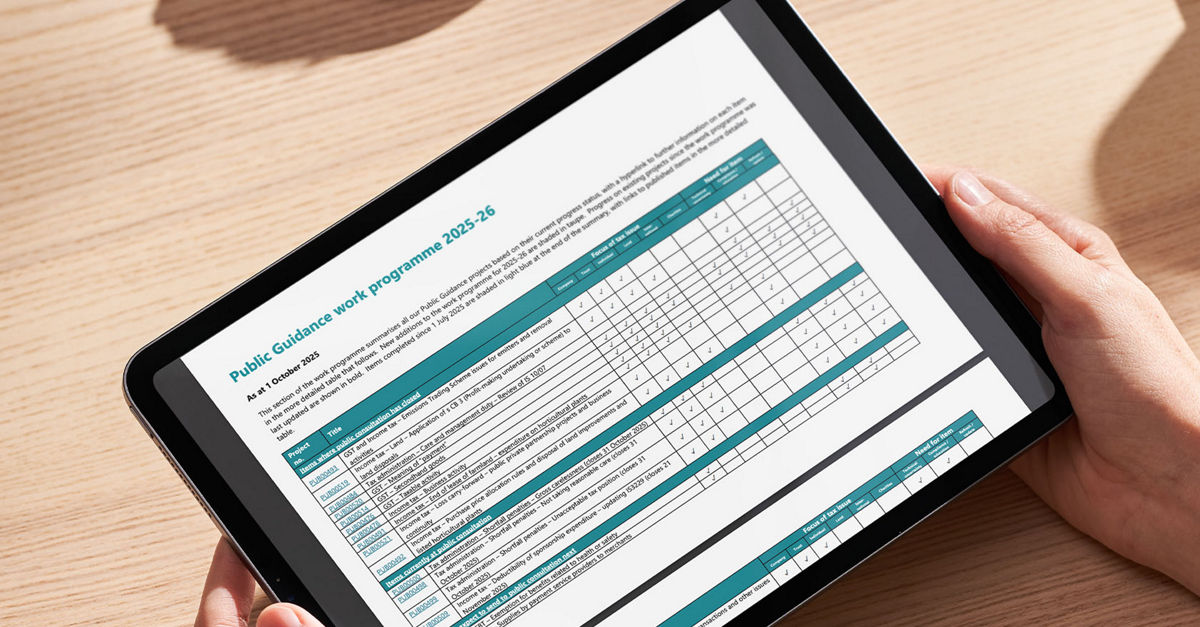By Amy Sexton & Robyn Walker
The prospect of a significant sum of money lying dormant and unclaimed will motivate many to search the Inland Revenue’s unclaimed money database, especially when media coverage draws attention to its existence. The recent Taxation (Annual Rates for 2025–26, Compliance Simplification, and Remedial Measures) Bill (the Bill) proposes changes aimed at simplifying the management of unclaimed money by Inland Revenue, with the intention of making it easier for rightful owners to make claims.
What is ‘unclaimed money’
Unclaimed money are funds held by an individual or organisation (such as bank, solicitor, utility company, life insurer, employer, other business) where the rightful owner cannot be located. After a specified period of time passes without contact, these funds are classified as “unclaimed” and transferred to an administrator. The required time period varies depending on the type of funds involved.
While Inland Revenue is widely recognised for administering unclaimed money, not all categories of unclaimed funds fall under its responsibility, a raft of options are outlined on The Treasury website.
What are the proposed changes?
Additional information
Currently the Unclaimed Money Act 1971 puts the following obligations on holders of unclaimed money:
- A holder must make reasonable efforts to locate the owner of money that is, or will soon become, unclaimed money and to communicate with the owner concerning the money.
- A holder of money that pays the money to the Commissioner as unclaimed money must provide to the Commissioner, with or before the payment and in a form acceptable to the Commissioner, the information relating to the owner and the money that is in the possession or control of the holder and is readily available to the holder, including—
a. the source, and history of the accrual, of the amount
b. the identity and whereabouts of the owner
c. the source of the owner’s entitlement to payment of the money.
Under the Bill. when transferring unclaimed money, holders will be required to provide Inland Revenue with more detailed information to assist in identifying the rightful owner. The new legislation will read as follows:
- A holder must make reasonable efforts to locate the owner of money that is, or will soon become, unclaimed money and to communicate with the owner concerning the money.
- A holder of money that pays the money to the Commissioner as unclaimed money must provide to the Commissioner, with or before the payment and in a form acceptable to the Commissioner, the information relating to the owner and the money that is in the possession or control of the holder and is readily available to the holder, including—
a. the source, and history of the accrual, of the amount
i. the full name, date of birth, and tax file number of the owner
ii. the address and contact details of the owner
b. the whereabouts of the owner
c. the source of the owner’s entitlement to payment of the money
d. where applicable, the number of the account where the money is held, the date the account was opened, and the date of the owner’s last interaction with the account.
It is important to note that under both the current and proposed legislation, the information needs to be in the “possession or control” and “readily available” to the holder. With more data points being required upfront there will be a need for businesses dealing with unclaimed money to give thought to whether new systems and processes are required to efficiently extract information, particularly if it is spread across different information sources.
20 year time bar
In 2021 a 25 year time bar was introduced for unclaimed money administered by Inland Revenue. The proposal is to reduce this time bar to 20 years (which is still a very long time!). If money remains unclaimed after the time bar, it will be removed from the unclaimed money list and transferred to the Crown.
Why make changes?
Currently, claimants often face challenges in proving ownership of unclaimed money, leading to considerable correspondence with Inland Revenue. These proposed changes are intended to streamline the process for all parties involved. For context, in the 2023/24 year Inland Revenue received 23,000 claims for unclaimed money but approved only 4,300 claims, amounting to $36.5m, with over $0.5b remaining unclaimed.
These proposed changes are scheduled to take effect from 1 April 2026.
If you believe you may have a claim to unclaimed money and are unsure how to establish ownership, please contact your usual Deloitte advisor for assistance.









